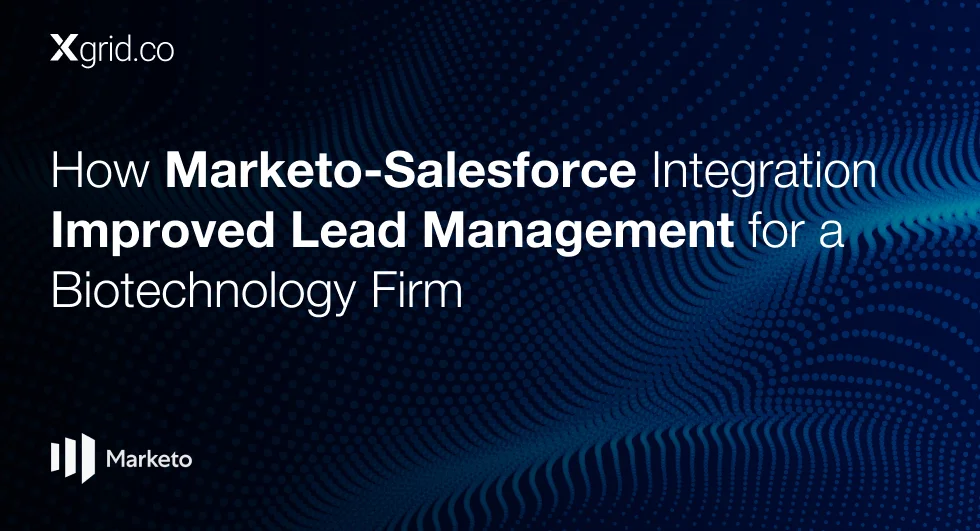Improve Campaign Targeting with Better Management of Marketo Engage
This article will guide you on how to improve your campaign targeting using Marketo Engage. We will break it down into simple steps, making it easy for you to understand and apply these strategies.
Improving your campaign targeting means making sure your marketing messages reach the people who are most likely to be interested in your products or services.
This can lead to better engagement, more leads, and higher sales. By using Marketo Engage effectively, you can refine your marketing strategies to focus on the most promising prospects.
What is Campaign Targeting?
Campaign targeting is about identifying and reaching specific groups of people who are most likely to be interested in your product or service. Instead of sending your marketing messages to everyone, you focus on those who are more likely to respond positively.
This targeted approach helps in creating more personalized and relevant marketing campaigns, which can significantly improve their effectiveness.
Why Should Companies Seek to Improve Campaign Targeting?
Improving campaign targeting helps companies in several ways:
Better Engagement
When you send relevant messages to the right people, they are more likely to engage with your content. For example, if you know that a segment of your audience is interested in eco-friendly products, you can tailor your messaging to highlight the sustainable aspects of your offerings.
Higher Conversion Rates
Targeted campaigns are more effective in turning leads into customers. By focusing on the needs and interests of your audience, you can create compelling calls-to-action that encourage them to take the next step.
Cost Efficiency
You save money by focusing your efforts on people who are more likely to convert. Instead of wasting resources on a broad audience, you can allocate your budget to high-potential leads.
Customer Satisfaction
Providing relevant information and offers can lead to happier customers. When customers receive content that resonates with them, they are more likely to have a positive experience with your brand.
When Should Companies Focus on Addressing It?
Companies should focus on improving campaign targeting when:
Engagement is Low
If people are not interacting with your marketing messages, it might be time to improve your targeting. Low engagement rates can indicate that your messages are not reaching the right audience or are not relevant to them.
Sales are Declining
If your sales are not meeting expectations, better targeting could help. By understanding the needs and preferences of your target audience, you can create campaigns that drive more conversions.
New Products or Services
When launching something new, targeting the right audience is crucial. Identifying the segments most likely to be interested in your new offerings can ensure a successful launch.
Expanding Markets
When entering a new market, increasing your campaign volume in Marketo can expedite reaching the right audience. Conduct thorough market research to grasp demographics, refining your targeting strategy effectively.
How Should a Company Improve Campaign Targeting?
Here are some practical steps to improve your campaign targeting:
Conduct Market Research
- Understand your audience by researching their needs, preferences, and behaviors. Use surveys, focus groups, and data analysis to gather insights. This research will help you create detailed buyer personas, which can guide your targeting efforts.
- Analyze your competitors to see how they are reaching your shared target audience. This can provide valuable insights and help you differentiate your campaigns.
Utilize Segmentation
- Divide your audience into smaller groups based on characteristics like age, location, interests, and buying behavior. For instance, you can segment your audience by their purchase history, engagement level, or demographic information.
- Create tailored messages for each segment to make your marketing more relevant. For example, you can send personalized email campaigns to different segments, addressing their specific pain points and needs.
Build Lead Nurtures
- Develop campaigns that guide potential customers through the buying process. Create a series of emails or content that educates and engages your leads, gradually moving them closer to making a purchase.
- Provide valuable content at each stage to keep them engaged and move them closer to making a purchase. For example, you can offer educational content at the awareness stage, case studies at the consideration stage, and product demos at the decision stage.
Data Standardization
- Ensure your data is clean and consistent. Inaccurate or inconsistent data can lead to ineffective targeting and poor campaign performance.
- Standardized data helps in accurately segmenting your audience and personalizing your messages. Use tools like data validation and deduplication to maintain clean data.
Test and Optimize
- Continuously test different aspects of your campaigns, such as subject lines, content, and images. A/B testing can help you determine what resonates best with your audience.
- Use the results to optimize your campaigns for better performance. For example, if you find that a particular subject line generates higher open rates, you can use similar strategies in future campaigns.
Who Should Manage Campaign Targeting?
Campaign targeting should be managed by a team that includes:
Marketing Managers
They oversee the overall strategy and ensure that campaigns align with business goals. They are responsible for setting objectives, allocating resources, and measuring success.
Data Analysts
They analyze data to provide insights and identify target audiences. They can help you understand your audience’s behavior and preferences, guiding your targeting strategy.
Content Creators
They create tailored messages for different segments. They are responsible for developing engaging and relevant content that resonates with your audience.
Sales Teams
They provide feedback on the effectiveness of the campaigns and help refine the targeting strategy. They interact directly with customers and can offer valuable insights into what works and what doesn’t.
Conclusion
Improving your campaign targeting with Marketo Engage can lead to better engagement, higher conversion rates, and more satisfied customers. By conducting market research, utilizing segmentation, building lead nurtures, standardizing data, and continuously testing and optimizing, you can ensure that your marketing messages reach the right people at the right time.
Remember, effective targeting is a team effort that requires collaboration between marketing, data, content, and sales teams. Start implementing these strategies today to uplevel your campaign targeting and achieve better results.
Downloads
Article (PDF-276 KB)MOST POPULAR INSIGHTS
- How Marketo Strengthened Data Hygiene and Marketing Efficiency for a Global Telecom Company
- How Marketo-Salesforce Integration Improved Lead Management for a Biotechnology Firm
- How a Tech Company Used Marketo to Refine ABM Strategies for Sales Engagement
- How Marketo Campaigns Were Streamlined with Templates and Tokens
- How Marketo Solidified Marketing Insights with Custom Attribution Models
Related Articles
Related Articles

Established in 2012, Xgrid has a history of delivering a wide range of intelligent and secure cloud infrastructure, user interface and user experience solutions. Our strength lies in our team and its ability to deliver end-to-end solutions using cutting edge technologies.
OFFICE ADDRESS
US Address:
Plug and Play Tech Center, 440 N Wolfe Rd, Sunnyvale, CA 94085
Dubai Address:
Dubai Silicon Oasis, DDP, Building A1, Dubai, United Arab Emirates
Pakistan Address:
Xgrid Solutions (Private) Limited, Bldg 96, GCC-11, Civic Center, Gulberg Greens, Islamabad
Xgrid Solutions (Pvt) Ltd, Daftarkhwan (One), Building #254/1, Sector G, Phase 5, DHA, Lahore




